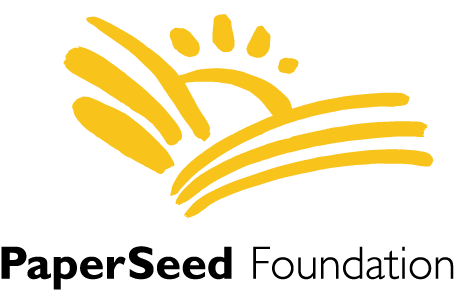Why Does Finland’s Education System Earn Such High Praise?
/Most people can agree that education is an important part of every person’s life, and a vital piece of a functioning, healthy democracy. At PaperSeed, we have advocated for the benefits education has on the lives of people, and the positive effect this has on societies at large.
However, the conversation gets more complicated when people discuss how and who ought to strengthen education and learning outcomes:
· Who will pay for it?
· How will it be implemented?
· What is the correct way to assess student learning?
· Can teachers be trained and compensated effectively and fairly?
It’s an important conversation, with millions of futures at stake.
We believe in an evidence-based approach to education and will be spotlighting the different approaches countries around the world utilize. We will explore the unique aspects that lead to improved learning outcomes. While no approach is perfect, we are hoping to share some common practices that can and perhaps should be applied to schools in countries that don’t perform as well.
Finland consistently ranks among the top performing countries on the PISA (Program for International Student Assessment) test for science, math, and reading. So, what is it about Finland, and why are education advocates so fascinated with Finland’s education model? It may be the stark contrast with Finland’s approach to teacher training and compensation, and the amount of free play students get throughout the school day.
Teacher training requirements vary widely by country. Most countries address teacher education standards at the national level, with the exception of a few such as Australia and the United States, which address teacher training standards more regionally at the state level. Finland’s teacher educational and training requirements are set at the national level, and has higher requirements than most other developed nations. Where a majority of the world’s developed nations require a minimum of a bachelor’s degree with some additional training, Finland’s teachers also need to complete a 3-year master’s program to be accredited. Moreover, the profession is difficult to get into: only one in ten students who apply to teaching education programs will be admitted. As such, Finnish teachers receive a level of respect on par with doctors and lawyers[1].
Interestingly, according to global data from the OECD, the starting Finnish teacher salary of $32,000 USD is barely higher than the global average of $29,000[2]. However, their required instructional time of approximately 600 hours a year falls well below the global average of 782 hours per year[3]. For comparison’s sake, an average teacher in the United States spends 1,080 hours in the classroom on instruction alone (not counting the hours of prep work, professional development, and other extracurriculars.) This goes against the practices of many other high-achieving countries such as South Korea and China, but is nonetheless effective as evidenced by Finland’s consistently high PISA scores[4].
The Finnish attitude toward free play is arguably the most famous aspect of the Finnish education model. Finnish children get a fifteen minute free play break for every 45 minutes of study (a standard enforced by Finnish law.) Numerous studies have proven that allowing children to engage in more frequent free play improves focus in the classroom[5]. In fact, it is not so much the specific activities that children engage in during free play, but the access to unstructured play time and a break from structured classroom activity that matters[6]. The Finnish approach to learning places a heavy emphasis on letting children be children, which is evidenced not only by the average of 75 minutes of unstructured play throughout the school day, but by the delay of starting compulsory education until age 7.
Photo courtesy Juan Freire, via Flickr
The Finnish education system isn’t the only model that is successful, but there are clearly some elements that other countries might consider adopting into policy. The proven efficacy of letting children take more frequent free play breaks throughout the day could improve the quality of classroom time for children in countries where the current model requires them to sit and study for hours at a time. Higher teacher compensation and more rigorous education requirements also seem to correlate with greater learning outcomes for students overall. If teaching is a highly respected position in society, it will also be more likely draw candidates with greater skills and have a higher rate of retention.
There are ways we can apply the Finnish methodology to PaperSeed’s work in education around the world. We are proud to recognize STIR Education, an India-based grantee partner whose work has put great emphasis on elevating the role of teachers in developing countries. Teaching was once seen as a noble profession in India but, in recent years, the profession has declined and teachers are often unprepared—or worse—absent entirely from the classrooms they are contracted to teach. STIR works at the grass-roots level, recognizing teachers who are doing outstanding work in the field and incentivizing them to share their innovations with others. STIR also connects teachers and engages in ongoing training, focusing on motivation and professional development to improve classroom outcome.
So, what can we learn from other countries that do well on the PISA? If a country isn’t performing as well, what can education advocates do in order to improve the quality of education? And who, ultimately, has the power to make these changes? Subscribe and keep reading as we explore more!
[1] Pasi Sahlberg, The Secret to Finland’s Success: Educating Teachers (Stanford Center for Opportunity Policy in Education ~ Research Brief: 2010), https://pdfs.semanticscholar.org/a6a0/b0091c0f61493e9ea6ed98a0bc7cf90e207d.pdf
[2] “Teachers’ Salaries,” OECD, https://data.oecd.org/eduresource/teachers-salaries.htm (July 27th, 2017)
[3] “Teaching Hours,” OECD, https://data.oecd.org/eduresource/teaching-hours.htm (July 27th, 2017)
[4] “Data,” OECD, http://www.oecd.org/pisa/data/ (July 21st, 2017)
[5] “Active Education: Growing Evidence on Physical Activity and Academic Performance,” Active Living Research, http://activelivingresearch.org/sites/default/files/ALR_Brief_ActiveEducation_Jan2015.pdf (July 21st, 2017)
[6] Timothy D. Walker, How Finland Keeps Kids Focused Through Free Play (The Atlantic: 2014), https://www.theatlantic.com/education/archive/2014/06/how-finland-keeps-kids-focused/373544/




